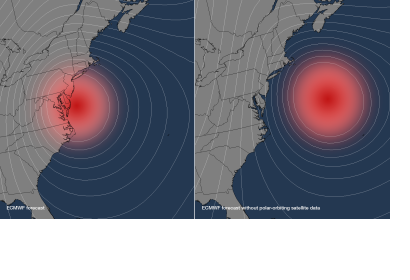According to a new study by the European Centre for Medium-Range Weather Forecasts (ECMWF), the NOAA forecasts of Hurricane Sandy’s track could have been hundreds of miles off without information from polar-orbiting satellites. Rather than identifying the New Jersey landfall location within 30 miles five-days before landfall, the models would have shown Sandy remaining at sea.
“This study shows the value of polar-orbiting satellites in developing life-saving forecasts with longer lead times," said Dr. Kathryn Sullivan, assistant secretary of commerce for environmental observation and prediction, and deputy NOAA administrator. “Had we thought the brunt of the storm was going to stay out in the Atlantic, or if residents had only a day to prepare or evacuate, the results would have been even more devastating.”
The ECMWF is an independent, intergovernmental organization supported by 34 European nations, providing global medium-to-extended range forecasts.

